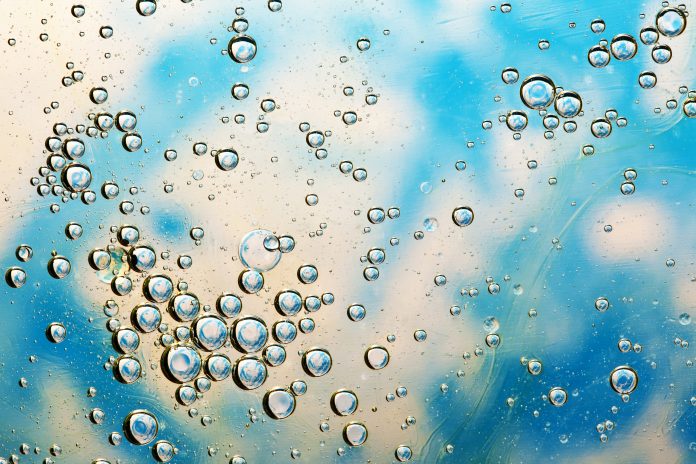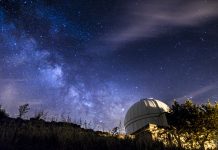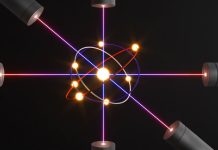Here, Professor Kazunari Domen, Shinshu University and The University of Tokyo, summarizes the 10-year ARPChem project conducted from 2012 to 2022 under the support of New Energy and Industrial Technology Development Organization (NEDO)
The ARPChem project aimed to develop three key technologies toward the production of basic chemicals from carbon dioxide and water using solar energy: (i) renewable hydrogen production by sunlight-driven photo- catalytic water splitting, (ii) modulalization of photocatalytic reactors and hydrogen separation membranes, and (iii) lower olefin production from hydrogen and carbon dioxide with high selectivity. Among these, the development of particulate photocatalysts and reaction system was an unprecedented challenge, and a great deal of effort was made by the author’s group.
Achievements and efficiency of the project
Figure 1 shows the performance of representative photocatalysts that existed before the project and those developed during the project. Before the project, some oxide photocatalysts exhibited high apparent quantum yields (AQYs) in the water splitting reaction, but only under middle ultra-violet light that was not included in sunlight. Some other oxynitride photocatalysts decomposed water but had low AQYs and under short- wavelength visible light with wave- lengths of 500 nm at most. During the project, the AQY of SrTiO3 was improved to more than 90% at the near ultraviolet region [1]. This high quantum efficiency indicates that particulate photocatalysts can drive the uphill water splitting reaction as efficiently as the photon-to-chemical conversion process in photosynthesis.
In addition, it became possible to drive the water splitting reaction under visible light using as (oxy)nitride and oxysulfide photocatalysts such as Ta3N5 [2] and Y2Ti2O5S2 [3] having an absorption edge wavelength equal to or longer than 600 nm. It is also possible to combine hydrogen evolution photocatalysts (HEPs) and oxygen evolution photocatalysts (OEPs) for water splitting. Such systems utilising two-step excitation of HEPs and OEPs are called “Z-scheme” after the photo-synthesis process. In the project, Z-scheme photocatalyst sheets that could be scaled-up and drive the water splitting reaction under visible light efficiently were developed (Figure 2) [4]. The solar-to-hydrogen (STH) energy conversion efficiency at the ambient pressure was improved to 1.0%, which was highest among ever existing systems based on particulate photocatalysts.
More than 70% of the produced hydrogen was recovered


Regarding the system development, extensible photocatalyst panel reactors and modules for separation of hydrogen and oxygen gases were devised (Figure 3) [4]. The photocatalyst panel produced a mixed gas of hydrogen and oxygen for approximately one year in the outdoor environment, with a peak STH efficiency of 0.76%, and transported the raw product gas to the gas-separation module smoothly. More than 70% of the produced hydrogen was recovered with a hydrogen purity of 94% from the raw product gas by using the gas-separation module.

Establishing energy- efficient renewable solar hydrogen production systems
The ARPChem project demonstrated the feasibility of producing solar hydrogen via photocatalytic water splitting on an area scale of 100 m2 and a time scale of one year. At the same time, it highlighted many technological issues for the practical application of this technology, including the development of photocatalysts and gas-separation membranes, reduction of system construction cost, and improvement of energy efficiency of water and gas processing. Safety and legal compliance of the system and process are also important aspects.
A follow-up project was launched in Japan in March 2022 with the aim of developing photocatalysts exhibiting an STH efficiency of 10% and one- hectare (104 m2) scale panel reactors including gas-separation systems in 2030. Demonstration of such a working prototype of the entire system will stimulate research in various fields and promote the establishment of large-scale, cost-effective, and energy- efficient renewable solar hydrogen production systems.
References
[1] Domen et al: https://www.openaccessgovernment.org/particulate-photocatalysts-producing-hydrogen-from-water-without-recombination-loss/99746/
[2] Wang et al., Nat. Catal. 1, 756–763 (2018): https://www.nature.com/articles/s41929-018-0134-1
[3] Wang et al., Nat. Mater. 18, 827–832 (2019): https://www.nature.com/articles/s41563-019-0399-z











